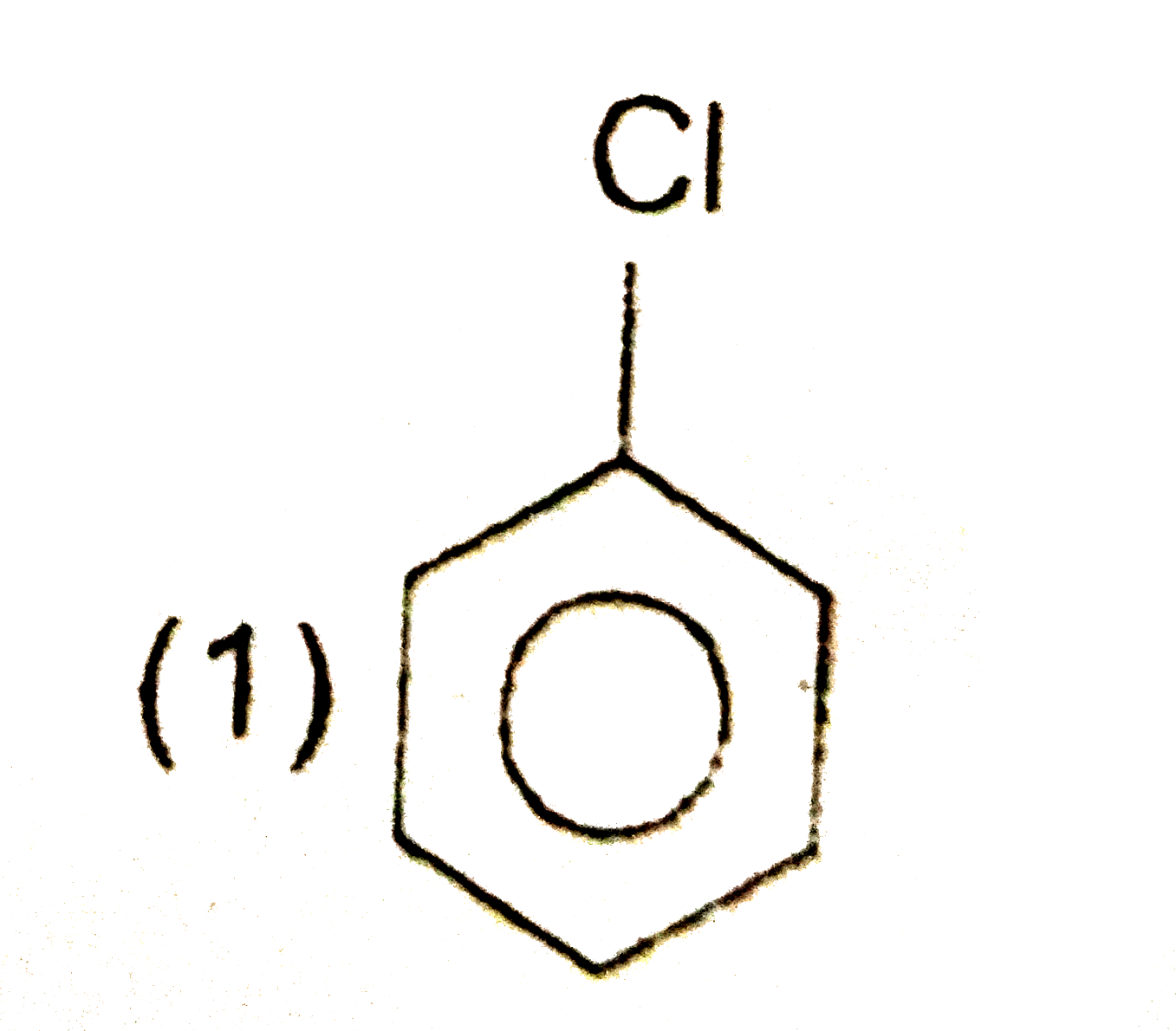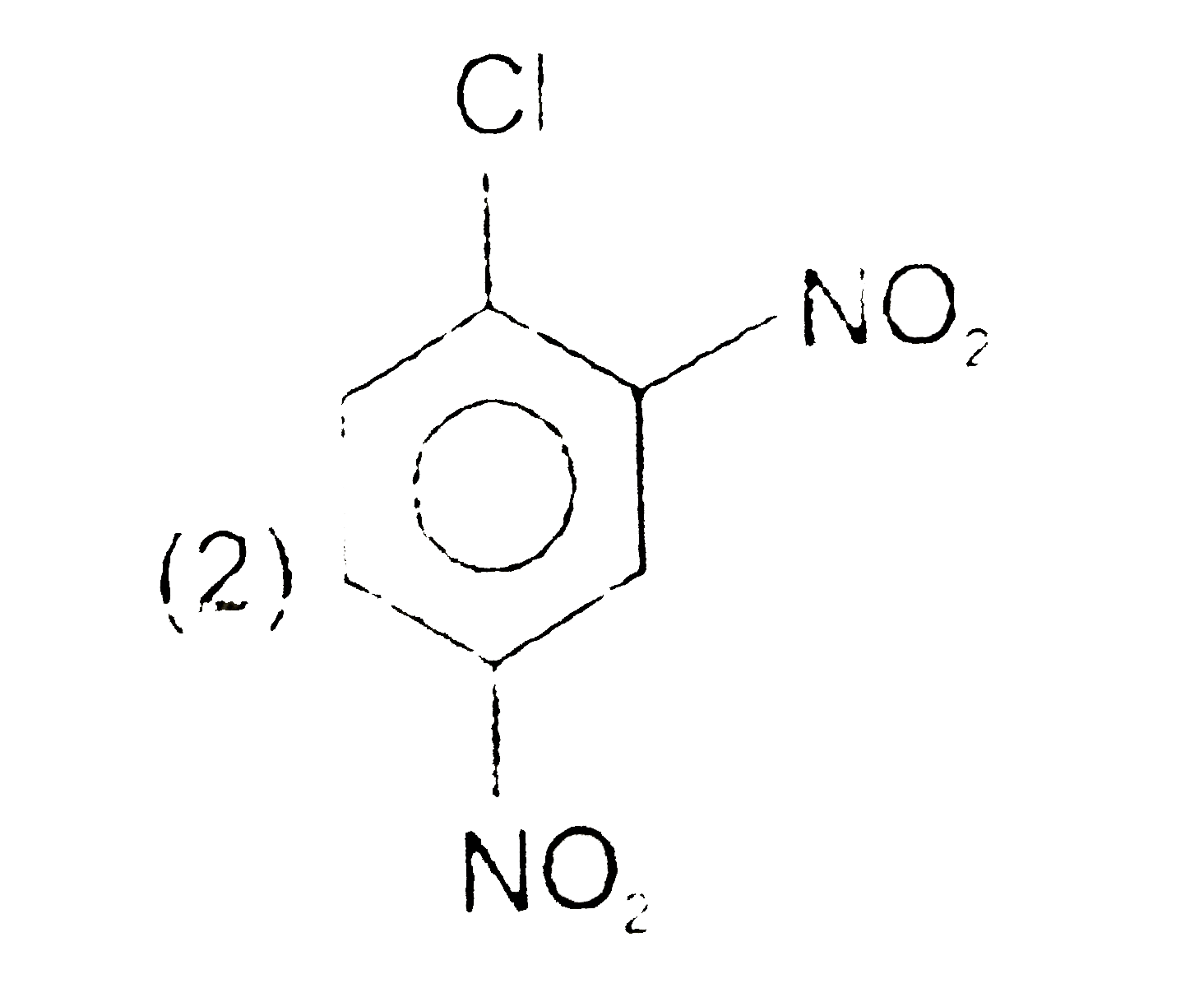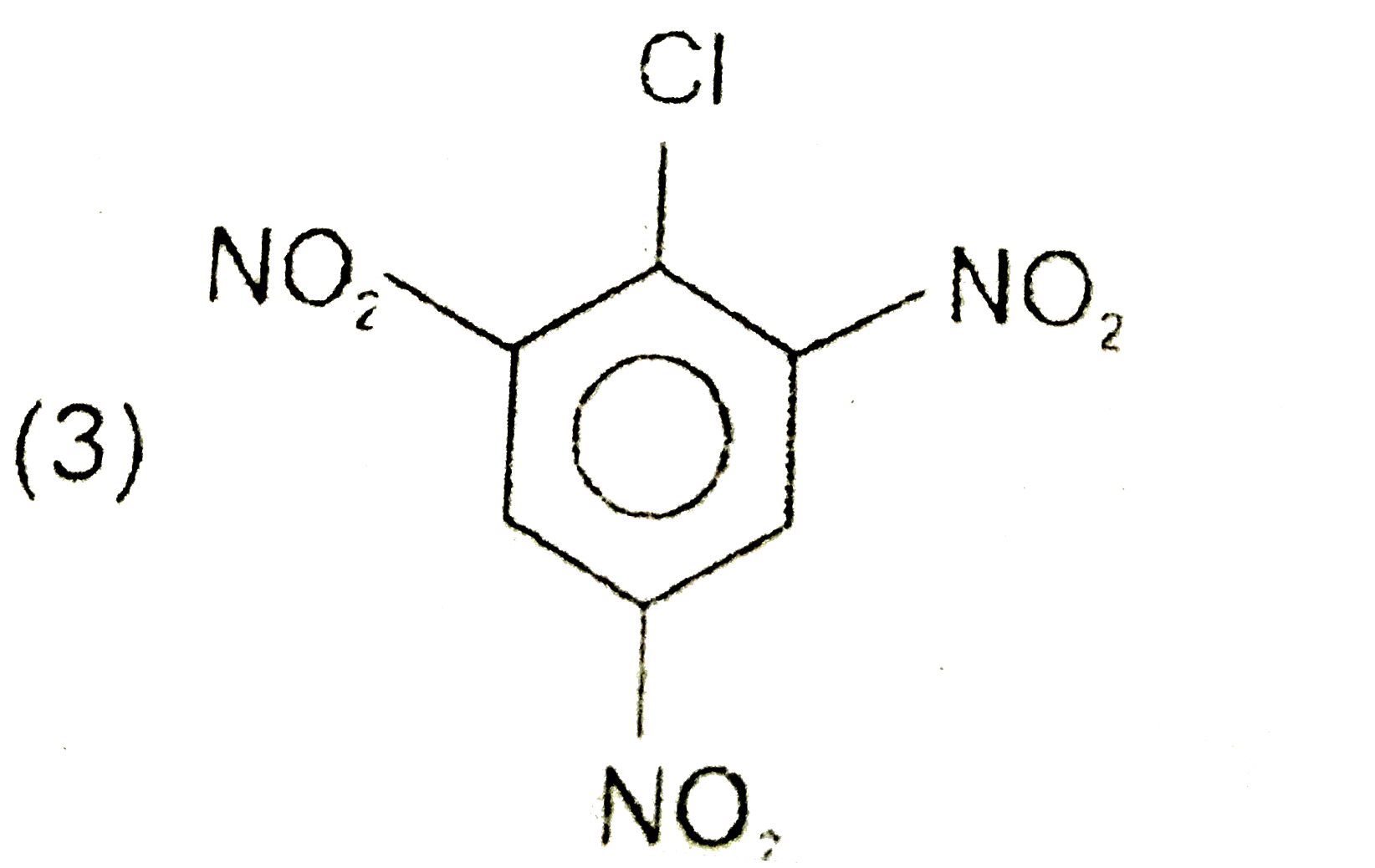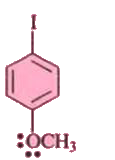Which of the following compound gives fastest SN2Ar reaction?




The correct Answer is:C
To determine which compound gives the fastest SN2Ar reaction, we need to understand the factors that influence the rate of nucleophilic aromatic substitution.
1. Understanding SN2Ar:
- SN2Ar stands for Substitution Nucleophilic Aromatic reaction. This type of reaction occurs when a nucleophile attacks an aromatic compound, leading to the substitution of a leaving group (often a halogen).
2. Role of Electron-Withdrawing Groups:
- The rate of SN2Ar reactions is significantly influenced by the presence of electron-withdrawing groups (EWGs) on the aromatic ring. These groups stabilize the negative charge that develops during the reaction mechanism.
3. Identifying Electron-Withdrawing Groups:
- Common electron-withdrawing groups include nitro groups (−NO2), which exhibit a strong -M (mesomeric) effect and -I (inductive) effect. The presence of these groups decreases the electron density of the aromatic ring, making it more susceptible to nucleophilic attack.
4. Analyzing the Given Compounds:
- We need to evaluate the compounds provided in the question to identify which one has the strongest electron-withdrawing groups and thus the highest rate of SN2Ar.
- Look for the presence and position of electron-withdrawing groups relative to the leaving group (often a halogen).
5. Comparing the Compounds:
- Compound 1: No electron-withdrawing groups present.
- Compound 2: Has one EWG at ortho and one at para position.
- Compound 3: Contains two EWGs at ortho positions and one at the para position.
- Compound 4: Has one EWG at para position.
6. Determining the Fastest Reaction:
- The compound with the maximum number of electron-withdrawing groups in positions that can stabilize the negative charge during the reaction will undergo the SN2Ar reaction the fastest.
- In this case, Compound 3 has three nitro groups (two at ortho and one at para), which significantly decreases the electron density of the benzene ring, stabilizing the negative charge and facilitating a faster reaction.
7. Conclusion:
- Therefore, the compound that gives the fastest SN2Ar reaction is Compound 3.
Final Answer:
Compound 3 gives the fastest SN2Ar reaction.
---
- SN2Ar stands for Substitution Nucleophilic Aromatic reaction. This type of reaction occurs when a nucleophile attacks an aromatic compound, leading to the substitution of a leaving group (often a halogen).
- The rate of SN2Ar reactions is significantly influenced by the presence of electron-withdrawing groups (EWGs) on the aromatic ring. These groups stabilize the negative charge that develops during the reaction mechanism.
- Common electron-withdrawing groups include nitro groups (−NO2), which exhibit a strong -M (mesomeric) effect and -I (inductive) effect. The presence of these groups decreases the electron density of the aromatic ring, making it more susceptible to nucleophilic attack.
- We need to evaluate the compounds provided in the question to identify which one has the strongest electron-withdrawing groups and thus the highest rate of SN2Ar.
- Look for the presence and position of electron-withdrawing groups relative to the leaving group (often a halogen).
- Compound 1: No electron-withdrawing groups present.
- Compound 2: Has one EWG at ortho and one at para position.
- Compound 3: Contains two EWGs at ortho positions and one at the para position.
- Compound 4: Has one EWG at para position.
- The compound with the maximum number of electron-withdrawing groups in positions that can stabilize the negative charge during the reaction will undergo the SN2Ar reaction the fastest.
- In this case, Compound 3 has three nitro groups (two at ortho and one at para), which significantly decreases the electron density of the benzene ring, stabilizing the negative charge and facilitating a faster reaction.
- Therefore, the compound that gives the fastest SN2Ar reaction is Compound 3.
Compound 3 gives the fastest SN2Ar reaction.
Similar Questions
Nucleophilic aliphatic substitution reaction is mainly of two types: SN1 and SN2. The SN1 mechanism is a two step process. Reaction velocity of SN1 reaction depends only on the concentration of the substrate. Since product formation takes place by the formation of carbocation, optically active substrate gives (+) and (-) forms of the product. In most of the cases the product usually consits of 5−20% inverted product and 80−95% racemised species. The more stable the carbocation, the greater is the proportion of racemisation. In solvolysis reaction, the more nucleophilic the solvent, the greater is the proportion of inversion.
Which one of the following compound will give SN1 reaction predominantly?
View SolutionPredict the order of reactivity of the following compounds in SN1 reactions :

View Solution
Knowledge Check
Which of the following compounds will not give SN2 reaction?
A BH2C=CH−ClC
BH2C=CH−ClC D
D
Aliphatic nucleophilic substitution is mainly of two type SN1 and SN2.SN2 reaction proceed with strong nucleophile in polar aprotic solvent. 3∘ halides do not give SN2 reaction. Inverted products are obtained in this reaction and mechanism of reaction occurs through the formation of transition state.
SN1 reaction proceed through the formation of carbocation in polar aprotic solvent. Solvent itself acts as nucleophile in this reaction. Racemization takes place in SN1 reaction.
Which of the following compounds will give SN1 reaction?APh−CH3∣−∣ClCH2CH3BH3C−ClCH3C−CH2−BrD
Which of the following compounds will give SN1 reaction?
AH3C−CH2−BrB CH3C−⋅⋅O⋅⋅−CH2−ClD
CH3C−⋅⋅O⋅⋅−CH2−ClD
Which of the following compounds will not give haloform reaction?
View SolutionStudy following mecahnism of haloform reaction

Whci of the following compound (s) give haloform reaction ?
View SolutionWhich of the following compounds cannot give E2 reaction with strong base?
View SolutionWhich of the following compounds will give isocyanide on reaction
with CHCl3+KOH ?
View SolutionWhich one of the following compounds is most reactive for ArSN2 reaction ?
View Solution